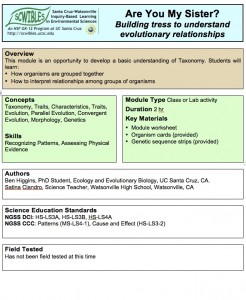 Sustainably Managing a Common Pool Resource
Sustainably Managing a Common Pool Resource
by Duran Fiack and Dan Johnston
The tragedy of the commons is a dilemma when multiple individuals, acting independently, deplete a shared, limited resource. Articulating solutions to the tragedy of the commons is one of the main problems of environmental policy and natural resource managers. In the absence of enlightened self-interest, altruistic or cooperative behavior, some form of authority is needed to solve the collective action problem.
In this module, students represent independent actors seeking to catch fish to support their livelihood. Students learn: 1) How human activities can cause resource depletion, 2) How interactions between individual actors are important in natural resource management, and 3) How to use data to make graphs and to discover trends over time.
Docs: fullltext.docx lecture.pptx info.docx handout1.docx
Keywords: cause, common pool resource, environmental policy, graphs, HS-LS3.A, HS-LS3.B, HS-LS4.A, natural resource, patterns


 Assessing Biodiversity Using a School Garden
Assessing Biodiversity Using a School Garden
